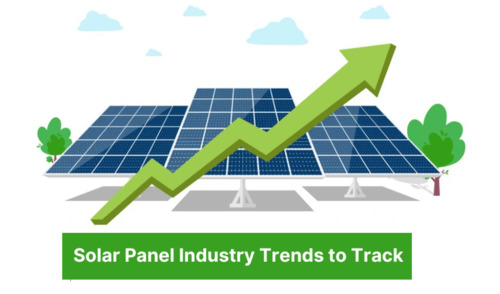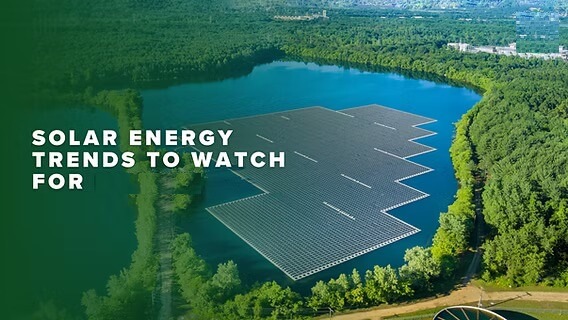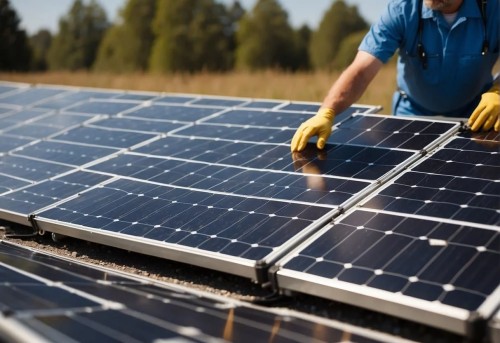Brisbane’s commercial solar section has been heating up, not just because of sunshine, but because of cleverer technology, sooner paybacks and new policy plus financing moves that are making rooftop and ground-mounted systems much more attractive for businesses of every size.
The commercial solar market in Brisbane is experiencing numerous key trends, primarily driven by high electricity prices and sustainability goals. Businesses are progressively investing in bigger solar systems and integrating battery storage to maximise self-consumption and ensure energy resilience.
Besides, the accessibility of government incentives like the Small-scale Renewable Energy Scheme (SRES) and innovative financing choices such as Power Purchase Agreements (PPAs) are making commercial solar more financially reachable than ever.
Below is a real-world, up-to-date look at the chief trends shaping commercial solar in Brisbane and what business owners, facilities managers and sustainability leads should watch for.
Brisbane as a Forefront of the Solar Revolution
Brisbane is a long-standing leader in solar energy adoption across Australia. With its plentiful sunshine, cumulative government support, and the unceasing rise in energy costs, it’s no wonder that more households and businesses are switching to solar as their main energy source.
Looking ahead to 2025, numerous trends are poised to transform how solar power is generated, stored, and consumed in the city. The future is brighter than ever, with innovations ranging from AI-driven energy management systems to next-generation battery technology reshaping the energy landscape.
Trends of Commercial Solar Systems

1. Bigger Rooftop Capacity & Faster Deployment
Large-scale rooftop projects and medium-sized commercial systems are becoming the norm. Australia’s rooftop solar capacity has grown substantially, driven by both residential and commercial installations. A national dataset shows rooftop PV capacity surpassing 26.7 GW and system counts in the millions, with system sizes increasing overall.
This broader market growth is paralleled in Queensland and Brisbane, where larger commercial roof installs are now common.
What it means for Brisbane businesses: if you have a large flat roof or multiple sites, there’s more installer experience, healthier procurement options and faster approvals obtainable than a few years ago.
2. Solar + battery is Standard for Commercial Projects
Commercial owners are progressively adding battery storage to solar systems to maximise self-consumption, shave demand charges and deliver resilience during outages.
Falling battery costs and clearer investment cases in Queensland have pushed numerous businesses toward solar-plus-storage solutions. Expect more solar systems to be sized around daytime load plus a battery bank sized for peak-shaving or resilience.
Practical tip: design battery size to decrease peak demand charges first (often the main cost driver), then for backup duration, not the other way round.
3. Integrated EV charging + on-site Electrification
Commercial sites are coupling PV + batteries with EV chargers and electrified equipment (pumps, forklifts, HVAC). This integration both lowers operating costs and supports corporate emissions targets, and government/finance programmes are pushing big retailers and chains to roll out these upgrades crossways several stores.
Recent government loans and financing programs are already backing huge retail decarbonisation rollouts (e.g., national-level lending to major chains for solar, batteries and EV chargers).
Why this matters: if your fleet or customers charge on-site, on-site solar decreases the marginal cost of EV charging and recovers your sustainability story.

4. Smarter Systems: Monitoring, Controls, VPP Participation
Commercial owners want definite performance. Advanced monitoring, smart inverters, energy management systems (EMS) and market participation (virtual power plants, VPPs) let businesses optimise export timing, contribute in demand response and even earn revenue from stored energy. Utilities and aggregators are expanding commercial VPP options as battery penetration upsurges.
Action item: require real-time routine dashboards and clear SLAs from your EPC or O&M provider.
5. High-efficiency, Space-maximising Panels (and bifacial where appropriate)
With an embossed roof area and higher energy density requirements, businesses are selecting higher-efficiency modules (>22–23%) and sometimes bifacial panels (where reflections from roof surfaces help boost yield). Aesthetic and sturdy all-black panels are also prevalent for visible sites.
Note: bifacial gives best returns on reflective surfaces or elevated arrays; evaluate on a site-by-site basis.
6. Flexible Commercial Financing & Shorter Payback Times
Commercial solar paybacks have reduced substantially in many Brisbane cases as energy prices increase and financing becomes more favourable. Vendors and financiers now offer PPA (power purchase agreements), lease, loan and CAPEX models, including zero-capex options where you pay only for the energy.
This flexibility makes acceptance easier for businesses with tight capital budgets. Current market reports cite remarkably shorter payback periods for commercial installs in Brisbane markets.
Tip: compare total lifecycle cost (electricity saved + incentives + maintenance) across CAPEX vs PPA models rather than upfront price alone.
7. Stronger Focus on Whole-of-business Decarbonisation
Solar choices are progressively linked to corporate sustainability targets and ESG reporting. Businesses are packaging rooftop solar as part of broader energy strategies, compounding productivity upgrades, obtaining green energy, and on-site generation to meet short- and medium-term emissions goals.
Large-scale projects (including hybrid solar + storage farms in Queensland) further gesture corporate and government alignment towards renewable integration at scale.
8. Grid Interactions & Export/charge Policy Awareness
As more commercial sites export energy, businesses essential to be aware of changing export charges, local network rules and potential “export limits” or new grid tariffs that affect economics. Some providers are also offering strategies to avoid new export charges and to structure systems for an ideal export/consumption balance.
Practical step: have your installer check local network restraints and projected export tariffs before finalising system size.
Local incentives & approvals — what Brisbane businesses should check
- Queensland and federal incentives (small-scale technology certificates, some regional incentives) still affect project economics — check current SRES eligibility and any Queensland-specific schemes.
- For large commercial projects, initial engagement with the local distributor (Energex/Ergon or others) speeds approvals and network influence assessments.
- Some national financing and grant opportunities are targeted at large-scale commercial rollouts — retain an eye on government and CEFC programs.
Quick Commercial Solar Checklist for Brisbane Businesses

- Energy audit: baseline half-hourly load profile for at least 2–4 weeks.
- Roof & structural survey: tilt, shading, orientation, roof condition, fire egress routes.
- System sizing strategy: prioritise self-consumption and demand charge reduction.
- Storage strategy: size batteries to shave demand peaks and provide required resilience.
- Finance model: compare CAPEX, lease, PPA and loan options.
- Grid & export check: confirm local network export limits/charges and approval timelines.
- O&M & warranties: insist on performance guarantees, remote monitoring and clear maintenance contracts.
- Procurement: choose Tier-1 modules and proven inverter/battery brands with local support.
- ESG alignment: capture metered data for emissions reporting and potential green certification.
- Future-proofing: plan space and conduit capacity for additional panels, batteries or EV chargers later.
Real-world Example & Market Signal
Queensland has seen high-profile rooftop projects and speedy commercial adoption, huge installations are delivering six-figure annual savings for some organisations, and large hybrid solar + BESS projects are being developed in the state, weight both local hunger and system-level investment. These examples reflect that commercial solar in Brisbane is moving from pilot projects to conventional capital-grade infrastructure.
Bottom Line
Yes of course. Increasing electricity costs, maturing battery economics, easier finance models and robust local installer capability make 2025 a compelling year for Brisbane businesses to invest in commercial solar + storage, provided you design systems around demand reduction, grid requirements and your long-term electrification plans. The mixture of on-site generation, storage and smart controls gives both cost certainty and flexibility, a clear win for numerous commercial operations.
